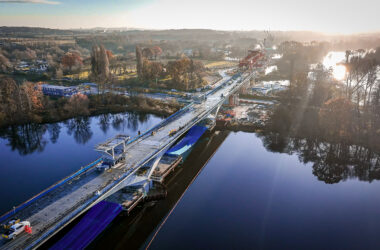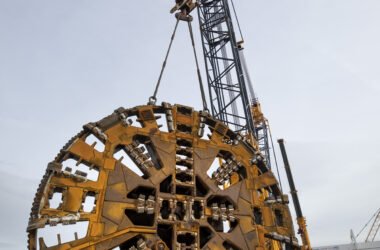Material Science Engineers from Binghamton University, USA, have been working on self-healing concrete that uses fungi as a healing agent.
The team hope that their technique will help to turn the tide against the ongoing battle against America’s crumbling infrastructure.
The USA has a significant problem with ageing bridges, and increasingly dangerous roads as infrastructure spending has halved since the 1950’s and 60’s.
Congrui Jin – an assistant professor at Binghamton University – believes that the answer lies with the application of fungi for self-healing concrete – they think that this low-cost, pollution-free and sustainable approach will genuinely stop infrastructure crumbling.
Jin started by looking specifically at concrete at why it crumbles. They found even the smallest of cracks in concrete inevitably leads it to decay.
Without proper treatment, cracks tend to progress further and eventually require costly repair … if micro-cracks expand and reach the steel reinforcement, not only the concrete will be attacked, but also the reinforcement will be corroded, as it is exposed to water, oxygen, possibly CO2 and chlorides, leading to structural failureCongrui Jin
The issue is that these cracks are not always visible and.can cause costly, sometimes catastrophic problems. Effecting everything from bridges to radiation shielding in nuclear power plants.
Current methods of repairing crumbling concrete
Currently, Engineers will simply replace ageing concrete.
This short-term fix is expensive to implement and only works until more cracks appear again.
Trichoderma reesei – How to fix the concrete permanently
Instead what Jin wanted to develop was a method to permanently fix concrete.
This idea was originally inspired by the miraculous ability of the human body to heal itself of cuts, bruises and broken bones… for the damaged skins and tissues, the host will take in nutrients that can produce new substitutes to heal the damaged partsCongrui Jin
Working with associate professor Ning Zhang from Rutgers University, and professor Guangwen Zhou and associate professor David Davies from Binghamton University with support from the Research Foundation for the State University of New York’s Sustainable Community Transdisciplinary Area of Excellence Program Jin set out to find a way to heal concrete.
The answer, they believe, is a fungus called Trichoderma reesei.
By placing fungal spores and nutrients into the concrete matrix during the mixing process, the team have found a way for concrete to self-heal.
When cracks first appear they let water and oxygen into the structure, activating the fungus.
The spores germinate and grow. As they do this, they precipitate calcium carbonate which heals the cracks. Once sealed the cracks block any more water or oxygen entering and the fungi returns to its dormant state.
What Next
While the research is still in its early stages, it is promising.
The team hope now to look at improving the survivability of the fungus within the harsh environment of concrete as well as exploring other alternative microorganisms like yeasts.
Published as “Interactions of fungi with concrete: significant importance for bio-based self-healing concrete” in the academic journal Construction & Building Materials.








